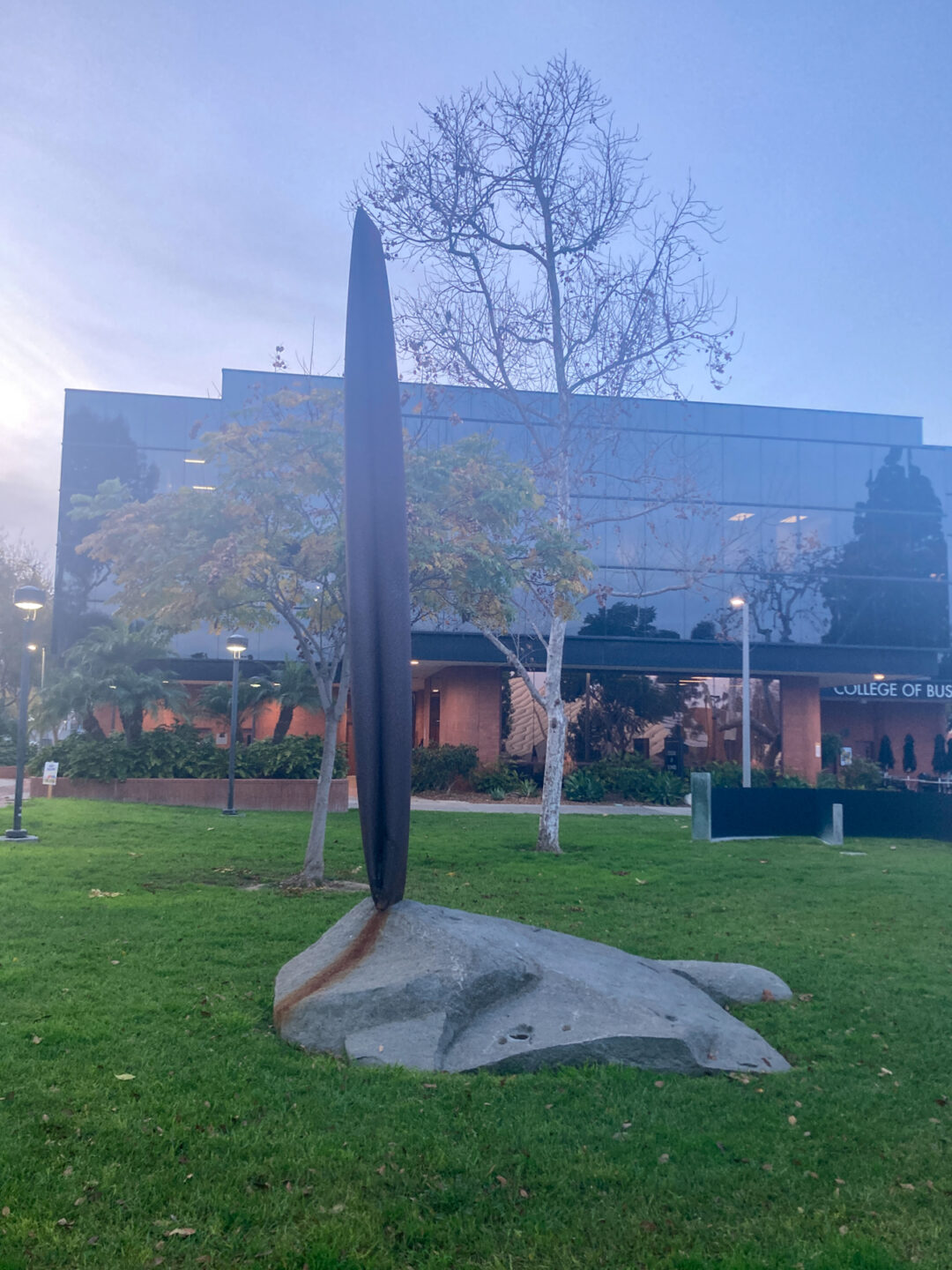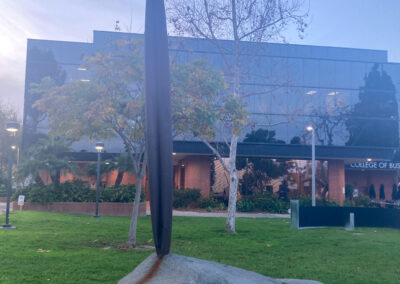Heaven’s Gate
Woods Davy
Woods Davy’s Heaven’s Gate invites visual exploration for viewers who have the opportunity to confront the monumental, site−specific installation as they transverse the bridge−way opposite the west entrance of the UAM. Davy’s fourteen−foot spire of folded steel tubing anchored to a three−ton granite boulder offers a discourse on the fusion of nature and the mechanical in the creation of a biomorphic form forged with industrial materials. The towering spire is flanked by a second, smaller stone that commands attention and captivates the imagination through its contrasting, refined and rough−cut features. A distinguishing characteristic of Davy’s sculpture is the peaceful coexistence of natural and man−made forms, which produces objects that transcend the sum of their parts. The unexpected alliance of materials and shapes caresses the earth while stretching for the heavens, offering a gateway to an unknown place. Through this action, Heaven’s Gate unv+G153eils Davy’s deep veneration for shapes reduced to their pure form. A casual gaze+G162 at this piece reveals components that seem to be at odds with one another. For instance, the large manufactured section of steel, forced into a predetermined shape, appears to be precariously balanced on sand−colored granite, its ridges and crannies formed by time and nature alone. Closer observation, however, reveals the fusion of nature and the mechanical, in the creation of a biomorphic abstract form forged with industrial materials.
In selecting a site for Heaven’s Gate, Davy opted for an area near the bridge−way, functioning as a gateway (joining the north and south plateau of the campus) and thus reinforcing the symbolism of the sculpture. The viewer is forced to confront and contemplate the piece from a variety of avenues, making it a focal point in the museum’s natural setting through its integration with the environment. Davy once stated the following: “I am very interested in the pure forms and the symbolism found in African and Oceanic art. The archetypal elements I am utilizing reference those forms that have traditionally expressed fertility, initiation, reincarnation, and other kinds of transformation rituals. These references to tribal arts are expressed through the simple, unencumbered forms which mean very much to me.”
Woods Davy was born in Washington, D.C., in 1949. He received a B.F.A. from the University of North Carolina in 1972 and an M.F.A. from the University of Illinois in 1975. Davy has been the recipient of many public art commissions since moving to Los Angeles in 1979. His large−scale pieces have been installed nationwide at multiple venues, such as the IBM facility in Gaithersburg, Maryland; the Xerox Corporation in New York City; and the Sterling Research Group in Collegeville, Pennsylvania. His work has also been shown locally at institutions such as California State University, Long Beach; the Los Angeles County Museum of Art; the Security Pacific Bank Plaza on Bunker Hill; the University of Southern California; Little Tokyo; and Cedars Sinai Hospital.
GET DIRECTIONS »




